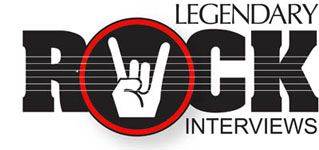Ex Whitesnake & Black Sabbath bassist Neil Murray talks to LRI about his band SNAKECHARMER and more!
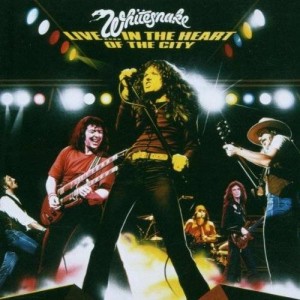
Neil Murray has a resume that most bass players could only dream of achieving over the course of their lifetime but the Scottish-born bassist gives off the impression he is just getting warmed up. From the late 70s to the worldwide smash 1987 album Neil was a cornerstone of the legendary British rock band Whitesnake. That’s right…he played on BOTH versions of “Here I Go Again”. In fact, the only person on more Whitesnake albums than Neil is David Coverdale himself. Despite having massive success across the pond and worldwide with the Snake, Neil found himself out of the band and into other projects including Japanese hard rockers Vow Wow and later, the mighty Black Sabbath joining during the Headless Cross era and later recording “TYR” and “Forbidden”. He’s played with Brian May for many years among countless others over the years and has now been foucused on his classic rock band Snakecharmer who have just released a great new album on Frontiers (including a sweet double lp vinyl edition). The band has ample excuse for their classic sound as it features both Neil and Mick Moody of Whitesnake as well as Laurie Wisefield (Wishbone Axe) keyboardist Adam Wakeman ( current Black Sabbath) drummer Harry James ( ex Thunder) and an absolutely amazing bluesy singer named Chris Ousey. I recently talked to Neil about his storied career as well as his new album, read on…
Legendary Rock Interviews: Thanks for talking with us Neil. You have had a very nice career playing with many artists but are most associated of course as the longest running member of Whitesnake other than David Coverdale. When you first joined the band in 1978 did it strike you then that it might be a band or the material could end up being pretty successful?
Neil: It certainly was going to be a proper band; David had done two solo albums collaborating with Micky Moody and then in 1977 they had linked up with Bernie Marsden and found a rhythm section in myself and Dave Dowle, and although initially promoters sometimes billed us as the David Coverdale Band, David definitely wanted it to be a band, not just a backing group. We started off in a very small way doing clubs and colleges but it was always a very down-to-earth, democratic situation and lots of fun to be part of. Personally, I had never seen anybody put so much into their vocals and have such a charismatic personality, even in rehearsals, and it was a new experience for me to play with such a strong front man. Of course David was the leader of the band and had a certain amount of fame from being with Deep Purple but even so the industry wasn’t very interested, and we really had to work our way up from the bottom. Song-wise, for me it took a couple of albums for us to find our real direction and some of the early numbers are quite fusion influenced or quite poppy. Certainly by the time Ready An’ Willing we had a very identifiable Whitesnake sound and we were playing big theatre tours in Britain and Europe and in Japan.
LRI: Your new band Snakecharmer features some amazing players and a phenomenal singer in Chris. How did you wind up at this particular lineup?
Neil: Myself and Micky Moody had worked together in a couple of bands where we generally played classic Whitesnake songs from the late ’70s/early ’80s period, and after a bit of a break from that we got back together to do a similar band and recruited nearly all the other members of Snakecharmer very quickly. I had often discussed working together with drummer Harry James, and I’ve played for the last 11 years with Laurie Wisefield in the Queen musical We Will Rock You in London, and I know his style very well, so I thought he would be a very good fit with Micky as the second guitar player and that’s definitely proved to be the case. Chris Ousey was recommended to us by a couple of people and we were lucky to find one of the very few unknown singers who are really at the top of their game, as that’s very rare to find in the UK these days. Adam Wakeman came in a little bit later after we’d signed with our management, and he’s been a great addition to the band though he is very much in demand as he works with Ozzy Osbourne, Black Sabbath and many others.
LRI: The album has a very warm, 70s vibe to it but excellent modern production values. The first thing that struck me was Chris’s voice on a track like “Cover Me In You” and these almost classic Queen-sounding guitars. I know you spent some years in Brian May’s band but are there a number of other influences that helped to shape the direction of this new material from Snakecharmer?
Neil: For me the influences extend quite a lot further than my time with Brian May, though in a sense Brian was influenced by many of the same people as myself, Micky and Laurie. You have to remember that both Micky alongside Bernie Marsden in Whitesnake and Laurie alongside Andy Powell in Wishbone Ash are both masters of harmony guitar lines, though in a different way from Brian’s work with Queen or for example Scott Gorham and Brian Robertson in Thin Lizzy. But our influences are quite wide-ranging; I think it’s just that going right back, most of us are the product of the blues-rock era of the ’60s leading into the more melodic rock of the ’70s and ’80s, and it’s a combination of everybody’s different tastes in music and the individual style that they have on that particular instrument.

LRI: As good as some of those classic Whitesnake albums were, the band was almost more magical live to many people. Do you think any one of those nine albums you recorded came closer to capturing that live ambiance or feel, do you prefer say “Lovehunter” to “Slide it In”?
I guess certain none of the studio albums were as exciting as the band live, but if you take various tracks from each album there’s quite a lot of excitement there. For me Lovehunter isn’t quite as good as it could have been, mostly because this was just before Ian Paice joined the band, and he really added the missing piece to the jigsaw in terms of his power and feel, which took the band to an new level. I wasn’t a member of Whitesnake when they recorded Slide It In; I rejoined after it had been finished but I got to redo all the bass for the American remix but I stuck pretty closely to what was already recorded by Colin Hodgkinson. For me Saints An’ Sinners had some good songs, but to some extent the songs were becoming a little bit predictable and that style had kind of run its course, so maybe it was time for a few changes to be made. Slide it In was more of a transitional album, with more melodic rock in the compositions of Mel Galley, rather than Bernie and Mickey’s more bluesy influences, but really I think it was the 1987 album which represented Whitesnake in totally new direction that David had decided to take the band in, with a lot of influence from Geffen Records and Whitesnake’s US management.
LRI: A nice album deserves a nice tour so Snakecharmer should be well in demand live. Do you have any ideas as to what fans might expect from this band live or any ideas what material might make the live set?
Neil: We are just about to start rehearsing for the next series of gigs, so we will have to try out most of the songs from the album to see which ones we think will work best live. We have already played Accident Prone and a couple of others from the album live in the last few months and they have gone down very well. The band will still be playing a number of classic Whitesnake songs and we just have to find the right balance between the old songs and the new songs, but I think that the combination will work very well together.
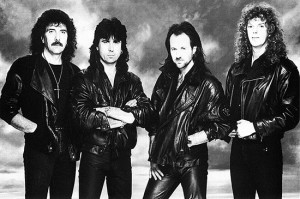
Neil, far right in BLACK SABBATH
LRI: You were a part of Black Sabbath during the Headless Cross tour and also during the TYR and Forbidden eras. TYR was viewed as a fairly different, almost experimental album back then but in recent years a lot of people have rediscovered it. Was that band fairly comfortable for you during those years, did you enjoy the creative process?
Neil: I definitely enjoyed being a member of Black Sabbath during 1989/90 and then again during ‘94/’95, though it was generally the case that a lot of Black Sabbath fans only want to hear the original lineup of Ozzy, Geezer, Bill and Tony. On Headless Cross there was perhaps an overemphasis on songs about the devil, so it was a fairly conscious choice to try and steer away from that on the TYR album, but musically I think it was a very strong record. It’s just a pity that while I was in the band we didn’t have a record company that could promote Sabbath as well as it might have done, so a lot of people didn’t get to hear TYR or Forbidden. We were trying to do something a bit more current when we recorded Forbidden using Ice-T’s guitar player Ernie C from the band Body Count as producer, but it wasn’t a very satisfying album to make and we weren’t very happy with how it sounded when it was mixed. However the songs sounded very strong when we played them live. On both the albums that I was on, the songs were mostly written starting with riffs from Tony Iommi, who has an enormous store of guitar progressions and riffs, then we would jam on those sequences, and Tony Martin would take demos away to write melodies and lyrics over the top which often he would manage to do very quickly. For me, to have a rough basic idea, and then for the band to put their own individual stamp on it by trying out different possibilities, is the best way of making a song sound like the product of a band rather than just one person, and although we did some of that with Snakecharmer, we perhaps need to do a bit more jamming in future.
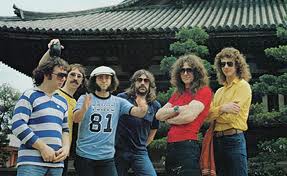
Classic Whitesnake pic in JAPAN, Neil far right
LRI: You were involved in some extensive worldwide touring over the years in several bands and have had success in many countries. What parts of the world do you most enjoy visiting and what memories do you have of touring the far east?
Neil: Certainly Whitesnake had a great deal of success in Japan, and I went there many times in the late 70s into the mid-80s with them, and also played there with Gary Moore, Brian May and Michael Schenker, plus of course I was a member of Japanese band Vow Wow in the late ‘80s, so I spent quite a few months there during 1987 and 1988. It’s only with Black Sabbath that I did any touring in other parts of the Far East, such as Korea and Singapore. I was very lucky to get the chance to play in Japan so often, as the fans there seem to be very knowledgeable, and they really listen to what you’re doing. In the early years with Whitesnake when we went to Japan, we were treated rather like pop idols with hundreds of girls following us from city to city and besieging the hotels, which was a very new and different experience for us. I always enjoy touring new territories so I hope to play in the Far East again, hopefully with Snakecharmer.
LRI: You have worked with some amazing keyboardists in guys like Jon Lord and Don Airey and Snakecharmer features Adam Wakeman! The keys on this album are used far more tastefully than many of the styles and sounds of the 1980s that tended to dominate the mix. How complicated was it to get the right balance of instrumentation on these tracks?
Neil: I guess that Adam basically played what suited the songs, although we would give him some suggestions if required. We are definitely not an ‘80s synth band, and Hammond organ is exactly the right instrument for our kind of band. In twin guitar bands, it’s always difficult for keyboards to make a big impression but we tried to leave some room for Adam to play some interesting parts. Although he tours with some very heavy bands, he is also well known for playing progressive rock, and it’s great to have a lot of different musical influences that we can add to the mix.
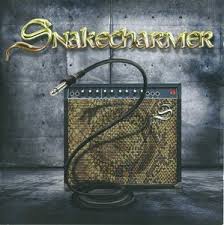
Cover of SNAKECHARMER’S debut album on FRONTIERS
LRI: A song like “A Little Rock and Roll” has an almost epic feel to it and “Turn Of The Screw” is just really catchy hard rock. Do you think the band and Chris managed to capture a pretty wide variety of moods and styles while staying within the format that people would expect from a band like Snakecharmer?
Neil: Yes, is the short answer! There were a few ideas which didn’t stir the imagination of some of the guys so we didn’t take them any further, but there is no master plan of what we should sound like, it’s just what we collectively enjoy playing and listening to. We know that people perhaps expect a particular style of music from us but there is no deliberate attempt to try and sound like Whitesnake, it’s just the way things end up because of how we play naturally. Myself and Micky are only one third of the band so the other guys have a lot of input into how the music sounds. It’s also very early days for us in terms of the amount of gigs we’ve played and the fact that it’s our first album, so we’ll see you what the direction of the band becomes in a year’s time when we have had the fans’ reaction to our live set.
LRI: At this stage in your career you have a pretty good idea of what your individual bass sound should be onstage and in the studio. Do you sometimes find yourself still tinkering with it or modifying your preferences at all?
Neil: I try to find a bass sound which suits the style of music that I’m playing at a particular time, and I have many different instruments, partly because they all sound slightly different. Some are more suitable for Snakecharmer or heavy metal sessions rather than for playing Queen songs, for example. On the Snakecharmer album I ended up re-recording the bass using a Modulus Graphite Quantum 4 bass, but I also play a Dingwall Afterburner and a couple of different Yamaha basses. I’m always looking for a better bass sound while still having an instrument that’s enjoyable to play, so I tend to change pickups and electronics – it’s unusual for me to leave a bass completely stock.
LRI: Last Question Neil…thanks again. You have been asked a million times what musical advice you could give an aspiring player….I would like to know… what business advice might you offer those same kids?
Neil: My advice is to be business minded, but of course a lot of creative musicians don’t find that doing that comes naturally to them. I think it’s impossible to avoid being ripped off completely but if you educate yourself about the business side of the music industry it’ll help you to know what the dangers are, and what the realistic expectations are as regards making a decent living. My advice is usually to be a singer and songwriter because those are the most likely ways of making money rather than just being a bass player, but of course there is always room for someone who is excellent at their particular instrument but at the same time it’s essential that you’re someone that people want to work with because of your personality. It’s also the case that if you write the songs and you have a strong personality then you often get to control the music or the band that you’re in, rather than just being a hired hand. It might be that the hired hand has the longer career, whereas a very individual player might either become hugely successful and unique or disappear completely. There aren’t really any rules, but my advice is to enjoy what you do, because there are so many horrible jobs that you might be doing instead!
Category: Interviews
